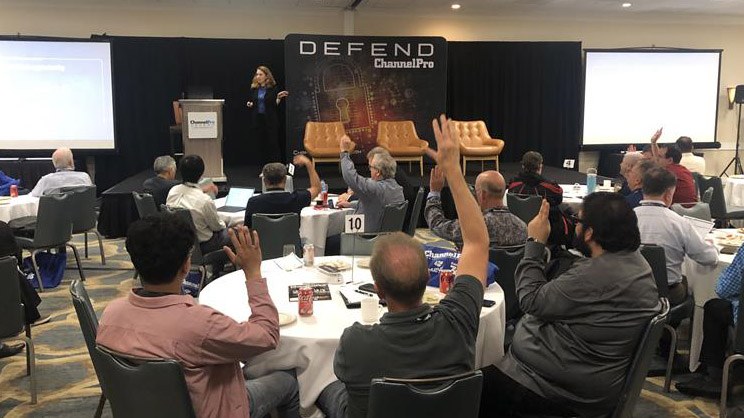When ITECH Solutions experienced a breach a few years ago that exposed its clients to ransomware, everything changed — not only its approach to security but the way the MSP interacts with its customers during periodic business reviews.

Brian J. Weiss
ITECH Solutions’ quarterly business reviews (QBRs) are more focused on the bigger picture, spanning everything from operational efficiency to procedural best practices. The company also spends much more time listening and asking a lot of follow-up questions, said CEO Brian J. Weiss.
“The old QBR — where you’re focused on showing tickets you’ve completed or viruses you have blocked — is out the door. They can see those reports on our client portal. Instead, we try to get clients to tell us about the current state of their business, what they expect their future to be, and what type of business outcomes they are looking to accomplish by getting there.”
More MSPs are thinking along the same lines. That means rejecting the traditional QBR approach, which typically focuses on selling services, not so much on the value customers are getting from the MSP. As MSP marketing advisor and business coach Kurt Uhlir put it: “If you seek to understand, upsells happen naturally if there is value there.”
A More Strategic Approach to QBRs
The first step in improving the QBR process is getting organized — assembling the team, creating the agenda, and verifying the participants. In general, attendees should be major stakeholders. On the MSP side, that might include the team lead and product manager.
Uhlir also recommended having an engineer at least listen in. While they probably won’t be an active participant in the nontechnical conversation, having the resource available is important, he said.
On the client side, leaders whose areas are affected by the services should attend, along with someone from the financial side of the business.

Kurt Uhlir
The next step is creating an agenda. Scott Beck, CEO of BeckTek, said his IT services and support firm relies on a constantly evolving checklist combined with reports the team pulls together to create a working agenda. The team sends that agenda to the client and incorporates their feedback before the meeting.
Some MSPs take a more automated approach by incorporating meeting productivity and team management software like Fellow, Avoma, or Coda. These tools make it easier to collaborate on agendas, assign actions, create meeting takeaways, and keep track of interactions over time.
Some are even leveraging AI for this purpose. Submitting client and MSP data to ChatGPT, for example, could highlight areas that should be emphasized in an agenda, recommend questions to ask, and even evaluate the success of current service levels.
It is something ITECH Solutions is working on. The MSP already set up and is experimenting with its own ChatGPT servers. While Weiss doesn’t envision using AI to help create the agenda for a client meeting, he is excited about the new AI-powered functionality in Microsoft Teams that transcribes and records meetings, and then creates a summary of what was discussed.
“It helps set expectations,” Weiss said. “We’ve had too many issues where the client comes to the next meeting and says, ‘We talked about this. I thought you were going to work on this,’ and I say, ‘We never had that discussion.’ ”
Making QBRs more effective also requires making them as interactive as possible. That means lots of back-and-forth discussions in terms everyone can understand, and in ways that are as relevant as possible to customers.
“If you can get them to think of you as part of their planning team, they will be much more conversational,” Beck said. “Once it’s conversational, it’s much easier to get the information necessary to proactively plan and budget for what they need.”
That kind of interactivity also leads to more upselling if and when it makes sense. In other words, it’s a way to introduce options for companies without the hard sell.
“Asking the right questions is crucial. You can learn why the client isn’t using one of your offerings and how are they accomplishing the same function without it,” Uhlir explained. “I don’t know how many times I’ve picked up $1 million in additional upsold services by dispelling a mistaken belief about cost or whether the ROI would be high enough.”

Scott Beck
Telling Stories
Another way to highlight sales opportunities in a nonthreatening way is through analogies and stories – a strategy that Beck prefers.
“If we’re meeting with a law firm, I might relay the story of one of our peers that had an issue with a law firm that we could prevent if we took these steps,” he explained. “Using these types of analogies and examples aren’t typical in the IT space, but we find that it works well.”
Ensuring that meetings are effective also requires doing a post mortem. Beck’s company does that by sending an email immediately after the meeting detailing the action points that arose from it. It’s a good way to close the loop, and provides an opportunity for the MSP to begin opening tickets to drive those changes forward.
ITECH Solutions goes even a step further; it grades meetings. “We want to know if they showed up on time, if all decision makers attended, and whether they accepted our recommendations,” Weiss said. “It helps us understand if we are moving the goalpost with the client on pace with our other clients.”
If the grades are sub par, the team sets an internal meeting to review, he added. “It can even end up with us firing the client if they aren’t willing to work with us because it’s a two-way relationship.”
This article was updated on 7/14/2025.
Image: iStock












